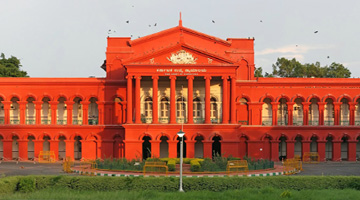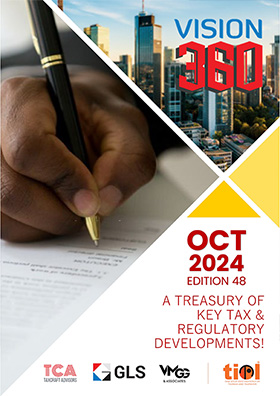CX - Computing quantum of evaded duty on basis of production capacity and unaccounted purchases of packing material is a mode of best judgment assessment: High Court
By TIOL News Service
BANGALORE, JUNE 27, 2018: ALLEGING clandestine manufacture and removal of Gutkha, the CCE, Bangalore had confirmed the CE duty demand of Rs.4.29 crore along with imposition of penalties.
The CESTAT had in its order dated 01.12.2011 - 2011-TIOL-1846-CESTAT-BANG confirmed the CE duty except for the period from April 2004 to March 2005 which was ordered to be recomputed by restricting the same to duty payable on the differential quantity of pouches determined based on production capactiy.
In appeal, the High Court had by order dated 25.02.2016 remanded the matter to the Tribunal for the limited purpose of looking into two aspects viz. availability of S.3A of the Central Excise Act, 1944, for the period of assessment 2003-04 & 2004-05 which provides for, “Charge of Excise duty on the basis of capacity of production in respect of notified goods”, since provision of S.3A were brought on the Statute Book w.e.f.10.05.2008 and another aspect relating to whether the goods in question, namely, “Gutkha”, were notified for the purpose of S.3A or not?.
Pursuant to the aforesaid remand, the CESTAT passed an order dated 30.08.2017 and which order is again appealed to the Karnataka High Court in the second round of proceedings.
The Tribunal had inter alia held that there was neither any reference to the said provisions of S.3A in the show-cause notice or adjudication order passed by the authority concerned and, therefore, the duty demand was not raised on the basis of S.3A for the period in dispute. On second aspect, it found that ‘Gutkha' were notified goods.
On the third aspect, for which the High Court had given liberty to the assessee to raise before CESTAT on that aspect of the matter namely, whether the ultimate amount of evaded duty quantified could go beyond the quantification done in the Show Cause Notice issued to the assessee or not, the Tribunal held in favour of the assessee , to the effect that such a demand could not go beyond the show cause notice and, therefore, the excess demand raised by the Adjudicating Authority beyond the show cause notice was struck off and finally, the demand as raised to the extent of show cause notice was upheld by the Tribunal.
The Tribunal noted in the impugned order in para-16 that though the Show Cause Notice was issued to the assessee raising a demand of evaded duty to the extent of Rs.4,29,95,446/- computed on the basis of production capacity and unaccounted cotton bags purchased for packing of ‘Gutkha', but since the computation of evasion of duty was worked out only to the extent of Rs.2,82,06,656/-, in the Show Cause Notice, the demand of evaded duty was finally restricted to the aforesaid amount of Rs.2,82,06,656/-.
Negating the contention of the appellant that liberty was granted to raise all issues is a misconceived argument and the same cannot be accepted, the High Court further observed that the finding of the Tribunal that the provisions of s.3A were not referred either in the show cause notice or in the adjudication order, is a finding which is without any fault.
The High Court further observed –
++ To estimate the extent of evasion of duty, there was no prohibition in applying the criteria of either production capacity or other evidence gathered by the Revenue for estimating the said evasion of duty even for such prior period .
++ The authorities below have not only taken into account the production capacity of the assessee, who manufactures “Gutkha” on basis of clandestine purchase of lime but also they have relied upon the clandestine purchase of cotton bags used as packing material for clandestine removal of the manufactured goods by the assessee. By way of comparison, they have computed evasion of duty both on the basis of production capacity as well as clandestine purchases of cotton bags used as packing materials on the basis of statements recorded of such supplier of cotton bags ...
++ We do not find any merit in the contention raised by the counsel for the appellant-assessee that in the absence of S.3A on the Statute Book prior to 10.05.2008, the criteria of production capacity could not have been adopted for the purpose of estimating the evasion of Excise duty by the Adjudicating Authority.
++ Such an estimation of clandestine removal of goods could only be based on an estimated production capacity or clandestine removal of such manufactured goods in the packing materials and both these criteria and yardsticks are usually adopted while making best judgment assessment under Excise law or Sales Tax laws.
++ The levy of excise duty is based on taxable event of manufacture, therefore, estimate of production can be based on capacity to produce, computed with reference to quantum of power consumption, labour employed, raw material consumed etc., and clandestine removal can be estimated and computed with reference to purchase of packing materials. Once the premise of evading Excise duty is determined and adopted by the Adjudicating Authority and a show cause notice is served upon the assessees in this regard, it essentially remains the exercise of a best judgment of the Adjudicating Authority based on relevant materials and evidence.
++ In the present case, computing such evaded duty on the basis of production capacity and unaccounted purchases of packing material in the form of cotton bags are the two parameters adopted by the Adjudicating Authority in the process of best judgment assessment, which cannot be said to be faulted or without any foundation.
++ As a matter of fact, S.3A of the Act was brought on the Statute Book just to crystallize and fortify such assessment procedure for the notified goods, for which such estimation of the evaded duty could not be otherwise made.
++ The principles enumerated in the provision of S.3A could not, therefore, be excluded by necessary implication for the period prior to 10.05.2008 as well and, therefore, finding of facts arrived at by the Adjudicating Authority and the Tribunal which reduced the demand of evaded duty to fall in line with the extent of evasion of duty as indicated in the show cause notice remains a finding of fact and does not give rise to any substantial question of law for consideration by this Court in terms of S.35G of the Act.
Concluding that the findings of facts on estimated evasion of duty cannot be said to be perverse in any manner, giving rise to any question of law, the order of the CESTAT was upheld and the appeals were dismissed.
(See 2018-TIOL-1200-HC-KAR-CX)















